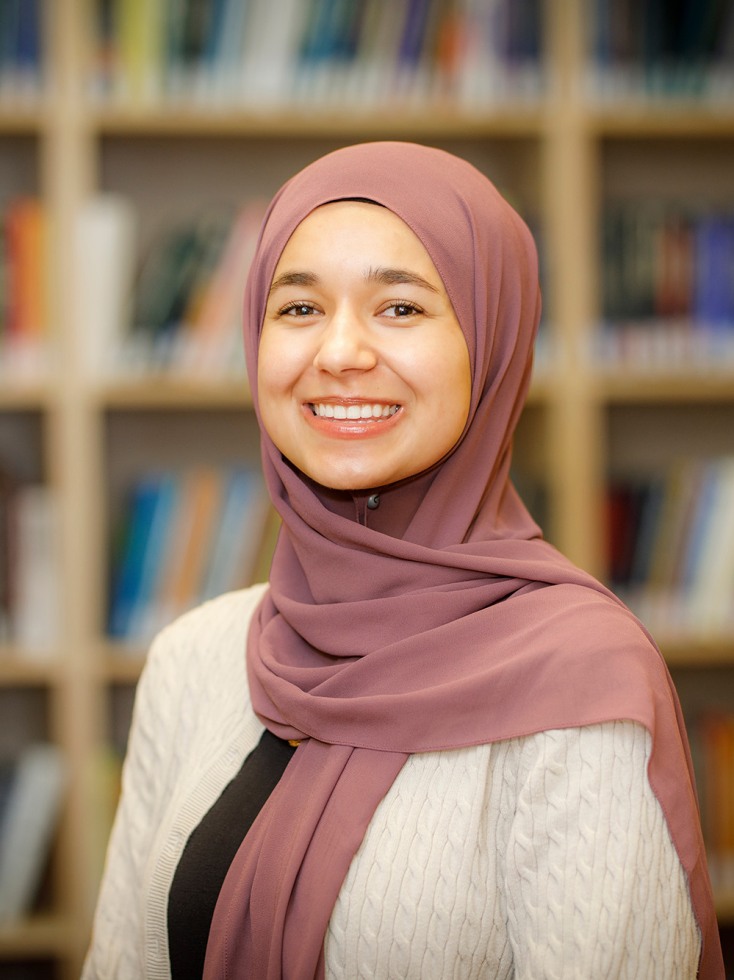Each year before the start of Ramadan—the holy month observed by Muslims worldwide with fasting, prayer and community gathering—Brown University medical students hold a Ramadan Health Fair in Providence. Their goal: to perform free, routine health checks for walk-in patients to prepare them for fasting. In 2024, that Health Fair saw over 50 patients in just three hours.
As a volunteer, Doha Maaty MPH’25 was profoundly impacted by the experience. “It showed us how much unmet need existed in the community,” she said.
Maaty, along with others, did a little digging and found out that over a decade before, in 2010, Dr. Wesam Ahmed partnered with Clínica Esperanza to launch a unique initiative: Amal Clinic, a “clinic within a clinic” designed to provide culturally attuned care for the South Asian and Middle Eastern communities of Greater Providence. The name “Amal”—meaning “hope” in Arabic—mirrored the mission of its parent clinic, “Esperanza,” hope, once more, in Spanish.
During the height of COVID-19, Amal Clinic, like so many others, closed its doors and remained shuttered in the years following. But the need for care remained as families that were uninsured, underinsured or facing language barriers continued to slip through the cracks of the health care system.
Together, Doha Maaty MPH’25 and Suraiya Hamidzada MPH’25 saw a chance to restore what had been lost. In 2024 they harnessed their MPH Practicum—a cornerstone of the MPH program that offers students the opportunity to tackle projects aligned with their interests—to revive the clinic while carving out a new path of service for Rhode Island communities.
Doha and Suraiya joined a team of skilled students from Brown’s Warren Alpert Medical School, School of Public Health and the greater Providence community in this effort: Samer Wahood, M.D.’26; Ummara Khan, M.D.’27; Omar Atia ’25; Karim Sorour and faculty adviser Dr. Abrar Qureshi. Together they reopened Amal Clinic and have provided services in primary care, dermatology, OB/GYN, chiropractic care and pain management for over 100 individuals throughout the past year.
Before coming to Brown to pursue her MPH, Doha Maaty studied global health with a minor in justice and peace studies at Georgetown University, focusing on advocating for health justice and equity, health as a human right, governance and sustainability. She also studied in Bangladesh, South Africa and Egypt where she explored health policy, community-based organizing and the role of culture and heritage in shaping health systems.
During her time at Brown, Doha built on the knowledge and experience from her undergraduate studies to further explore how laws and policies influence health care access and individual health outcomes. Whether in Professor Elizabeth Tobin-Tyler’s Health Justice and Public Health Law courses, or through her role as a public health policy intern with Brown’s State and Territorial Alliance for Testing (STAT) Network—led by Brown faculty members Dr. Scott Rivkees and Stefanie Friedhoff—she actively sought diverse experiences to deepen her understanding and strengthen her foundation in the field.
Doha’s graduate thesis examined how urban soundscapes impact the health and well-being of immigrant communities in Greater Boston and Greater Providence. During her MPH studies, she also worked with Brown’s Pandemic Center on Professor Wilmot James’ Health Security Partnerships in Africa project, which analyzes biosafety and biosecurity infrastructure and policy in six African countries. She graduated in May.
We spoke with Doha, who acted as director of operations for Amal Clinic, about co-founding the clinic while at Brown and her future plans.
